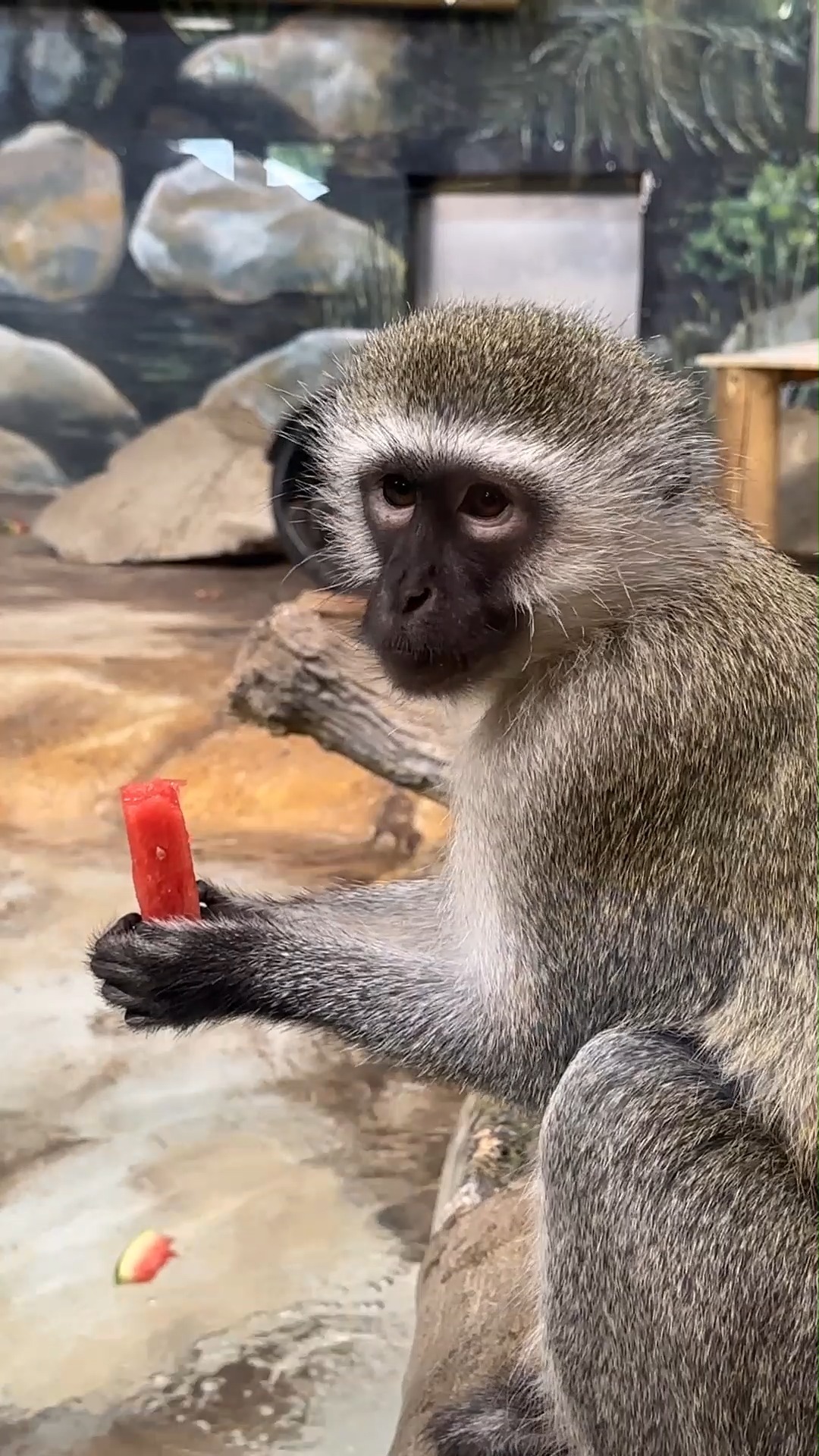- The significance of National Watermelon Day and its celebration in zoos
- The role of enrichment in the lives of zoo animals
- The nutritional benefits of watermelons for animals
- Examples of watermelon enrichment activities for various species
- The broader impact of enrichment on animal welfare and conservation efforts
August 3rd marks National Watermelon Day, a delightful holiday celebrating one of the sweetest and most refreshing fruits of the summer. This year, the celebration extended to include the animal residents of various zoos, with many enjoying a range of watermelon-based enrichment activities. These events highlight the importance of enrichment in zoo management and wildlife conservation, as well as the nutritional benefits of watermelons.
Enrichment plays a crucial role in the lives of zoo animals. It refers to a range of activities and items provided to animals to stimulate their natural behaviors and enhance their well-being. Enrichment can include physical challenges, novel objects, training sessions, and foods that encourage foraging. On National Watermelon Day, watermelons served as a versatile tool for enrichment, offering both physical and sensory stimulation to zoo animals. By engaging animals in activities that mimic their natural environment and behaviors, enrichment helps prevent boredom and promotes physical and psychological health.
Watermelons are not just a tasty treat for zoo animals; they also offer significant nutritional benefits. Rich in water content, watermelons help keep animals hydrated, particularly during the hot summer months. They are also a source of vitamins A, B6, and C, as well as antioxidants such as lycopene, which support overall health. For many zoo animals, these nutrients contribute to maintaining strong immune systems, healthy skin, and good digestion. Thus, watermelon enrichment is both a fun and beneficial addition to their diets.
Zoo teams get creative with watermelon enrichment, crafting activities that cater to the needs and preferences of different species. For instance, big cats like lions and tigers might receive whole, frozen watermelons to bat around and chew on, mimicking the experience of hunting and consuming prey. Primates, such as gorillas and chimpanzees, can enjoy watermelon slices hidden in puzzle feeders, encouraging them to use their problem-solving skills to access the treat. Even aquatic animals like otters benefit from watermelon enrichment, with pieces floating on the water’s surface, stimulating their natural foraging behaviors. These activities not only provide physical exercise but also engage the animals’ cognitive abilities, making enrichment a vital part of their care.
Beyond the immediate enjoyment of National Watermelon Day, enrichment activities have a lasting impact on animal welfare and conservation efforts. By enhancing the quality of life for zoo animals, enrichment supports their overall well-being, which is especially crucial for those participating in breeding programs aimed at preserving endangered species. Healthy, stimulated animals are more likely to reproduce successfully, contributing to the genetic diversity and sustainability of their species. Additionally, observing animals engaged in enrichment activities provides valuable insights into their behavior and needs, informing better practices in zoo management and conservation strategies.
Incorporating watermelons into enrichment activities also helps raise public awareness about the importance of providing stimulating environments for zoo animals. Visitors to zoos can witness firsthand the positive effects of enrichment, fostering a deeper appreciation for the complexity and needs of different species. Educational programs and social media posts, such as the Instagram reel highlighting this year’s watermelon enrichment activities, further extend this message to a broader audience. By engaging the public in these efforts, zoos can garner support for conservation initiatives and promote a culture of respect and care for wildlife.
National Watermelon Day offers a perfect opportunity to explore the multifaceted role of enrichment in zoos. Watermelons, with their appealing taste and nutritional benefits, serve as an excellent enrichment tool, encouraging natural behaviors and supporting the health of various zoo animals. From big cats to primates to aquatic creatures, the creative use of watermelons highlights the ingenuity and dedication of zoo staff in providing high-quality care. Beyond the enjoyment of this special day, enrichment activities contribute to broader conservation goals and public education, underscoring the critical role zoos play in wildlife preservation. As we celebrate National Watermelon Day, it’s essential to recognize and support the ongoing efforts to enhance the lives and well-being of zoo animals through thoughtful and innovative enrichment practices.
*****
Source Description
It’s National Watermelon Day! In honor of this tasty treat, the zoo animal residents got a variety of watermelon enrichment. 🍉


